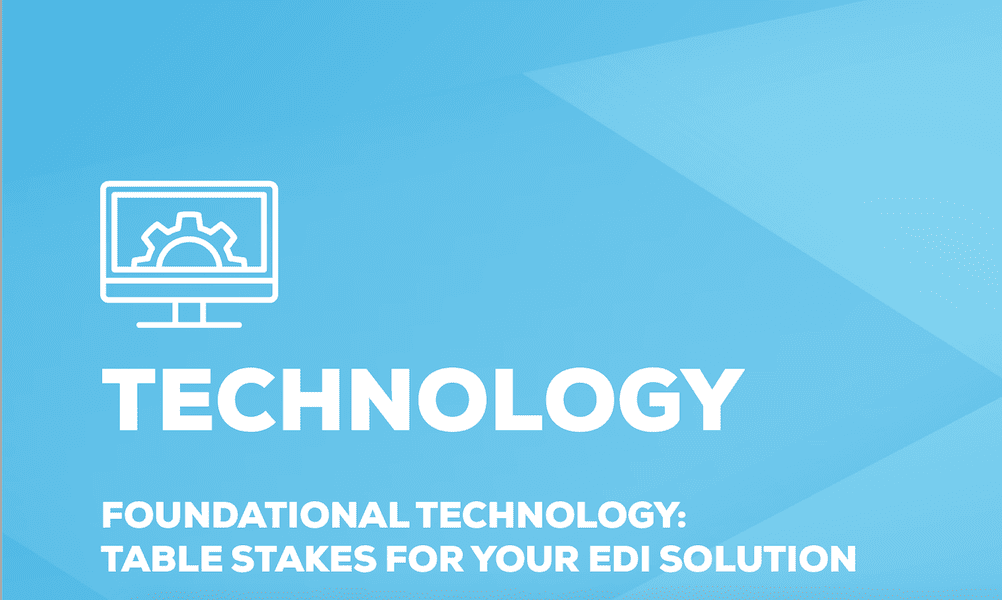Technology: Table stakes for your EDI solution
When looking for an EDI solution or EDI platform, most companies start by evaluating the provider’s technology. This is an essential first step in ensuring the solution can meet your business requirements and those of your trading partners.
If you’re wondering how to get started, here are some basics about EDI technology to consider.
Five Components of EDI Technology
EDI is a mature technology that has been used by companies to standardize business data exchange for more than 50 years. While the technology continues to evolve, an EDI platform always includes these five primary components:
Translation:
An EDI translator provides a means of transforming EDI data to and from various data formats in order to comply with trading partners’ requirements.
Connectivity:
The connectivity layer transports data between your company and all of your trading partners. This may include a VAN, AS2 or FTP connection (or all three) based on your trading partners’ requirements.
Mapping rules:
The mapping layer is where electronic trading parameters are set up for all of your EDI relationships. These maps are unique for each trading partner due to their unique supply chain or business process requirements. A different map is needed for each transaction with each individual unique trading partner, and these maps are often updated multiple times a year.
Cross-referencing business rules:
Cross-referencing rules allow you and your trading partners to speak the same language. For example, a retailer may think of your products in terms of SKUs whereas you think of your products in terms of UPCs or vendor part numbers. In this example, cross-referencing allows you to send your part numbers to your retail customers in terms of their SKUs.
Automation:
EDI solutions include automation features that save time by reducing keystrokes and minimize data entry errors. These solutions include intelligence about your trading partners to automate data exchange and when needed, automate data with your business system(s) of record such as eCommerce, ERP, shipping or other system using APIs.
Some companies have reduced keystrokes per order by 90 percent or more by taking advantage of EDI automation.
Full-Service EDI Providers Go Beyond Technology
While evaluating an EDI platform’s technology is an excellent place to start, technology is just one of seven critical components of a full-service EDI solution. Full-service EDI solutions include all of these components as well as access to dedicated experts that develop, monitor and maintain all aspects of the technology—so your team doesn’t need to become an expert in these technical details.
Download our new white paper for insight on selecting an EDI platform that goes beyond technology with a full-service team to manage all the complexities of EDI on your behalf.
Evaluating Your EDI options: 7 Building Blocks of Full-Service EDI
Get insights on choosing the right EDI solution for your business and the seven components vital for truly full-service EDI.
GET THE WHITE PAPER- SPS Commerce Named #1 IT Infrastructure Software by G2 - February 25, 2025
- Optimizing RTV: The key to smarter supply chain management - January 6, 2025
- E-invoicing: all the basics you need to know - December 16, 2024

RELATED POSTS
What is a 2D barcode and how does it ...
Building brand trust: why transparenc...
Advancing food supply chain visibilit...